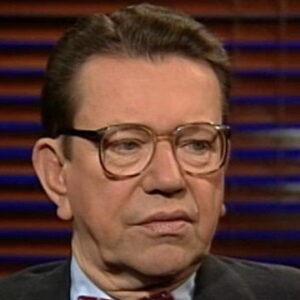Paul Martin Simon worked as a journalist, politician, and professor. He was chosen school president during his high school years and successfully advocated for a racially integrated admittance policy. He began his career as a reporter for a newspaper but quickly moved into politics. During his term, he proved to be an effective legislator, passing more amendments than anybody else. He was dedicated to improving government service to the people and served as their ombudsman in many ways. He campaigned for more investment in education and health care while also advocating for fiscal restraint in other areas. He was a civil rights activist who opposed the death penalty. He advocated for the lifting of the US embargo on Cuba and backed a humanitarian mission to Rwanda in 1994 during the atrocities there. He was chastised for his socialist views on numerous issues and was unpopular among his colleagues in Congress. He was known as “Reverend” because of his incorruptible image. He took pride in modeling himself after the liberalism of Franklin Roosevelt and Harry Truman. In his lifetime, he wrote over twenty books on a variety of issues, including interfaith weddings, global water crises, and so on.
Childhood and Adolescence
Paul Simon was born on November 29, 1928, to Lutheran preacher Martin Simon and Lutheran missionary Ruth Tolzmann. They instilled a strong sense of Christian morality in him.
He attended Eugene public schools and Concordia Academy High School in Portland, Oregon, before enrolling at the University of Oregon and Dana College in Nebraska, but was unable to complete his education.
Career of Paul Simon (Politician)
He borrowed money in 1948 to take over and run the Troy Call newspaper, renaming it the Troy Tribune, and going on to develop a chain of 14 weekly newspapers.
He utilized the Tribune to uncover gambling, prostitution, and government corruption, and he was called as a witness before the United States Senate’s Crime Investigating Committee.
He quit the newspaper business in 1951 to join the US Army. He served in the Counter-Intelligence Corps as a special agent in Europe along the Iron Curtain and was dismissed in 1953.
Paul Simon, a democrat, entered politics in 1955 at the age of 26 when he was elected to the Illinois House of Representatives.
He was elected to the Illinois State Senate in 1963 and was a primary proponent of the state’s Open Meetings Law and the Illinois Arts Council legislation.
He was elected Lieutenant Governor of Illinois in 1969. He collaborated with Republican Governor Richard B. Ogilvie on the state’s first income tax and the fourth Illinois Constitution’s constitutional convention.
He was elected to Congress on a Democratic ticket from Illinois in 1974 and was re-elected to four more Congresses after that. |
He was elected to the United States Senate in 1984, upsetting three-term incumbent Charles H. Percy.
He attempted to run for President on a Democratic ticket in 1988, but was unsuccessful since he was barely recognized outside of Illinois.
In 1990, he defeated Congresswoman Lynn Morley Martin for re-election to the US Senate. He did not run for re-election in the next election year.
After leaving politics in 1996, he became a professor at Southern Illinois University in Carbondale, where he taught political science, history, and journalism.
He was the Director of the SIU Public Policy Institute, which was later renamed in his honor at Southern Illinois University in Carbondale, Illinois.
Among his works are ‘A Hungry World’ and ‘You Want to Change the World?’ So Change It, The Tongue-Tied American, and The Politics of World Hunger, all of which he co-wrote with his brother Rev. Arthur Simon.
He wrote the National Literacy Act, the Direct Student Loan Program, the School-to-Work Opportunities Act, and changes to the Job Training Partnership Act.
The first five federally chartered high-speed lines, including the St. Louis-Chicago-Detroit/Milwaukee corridor, were established as a result of legislation he introduced.
He sponsored legislation that established the Illinois-Michigan Canal National Heritage Corridor and expanded the Jefferson National Expansion Memorial to Illinois.
Major Projects of Paul Simon (Politician)
Paul Simon was a key supporter of the 1982 Missing Children Act, which resulted in the establishment of the National Center for Missing and Exploited Children.
In 1994, his efforts to reduce television violence resulted in broadcasting networks defining violence guidelines, the Parental Advisory System, and an independent monitoring system.
‘Lincoln’s Preparation for Greatness: The Illinois Legislative Years,’ was his well-researched work. He used original papers from Lincoln’s time in the General Assembly, and the book was well-received across the United States.
Achievements and Awards
During his 14 years in the Illinois legislature, Paul Simon received the Independent Voters of Illinois’ ‘Best Legislator Award’ seven times.
Personal History and Legacy
Paul Simon married Jeanne Hurley, a Catholic, on April 21, 1960. They were both members of the Illinois House of Representatives. Sheila and Martin were their two children. Jeanne died in the year 2000.
He married Patricia Derge, widow of former Southern Illinois University President David Derge, in May 2001 while working as a lecturer at Southern Illinois University.
Following heart surgery, he died on December 9, 2003, in Springfield, Illinois, at the age of 75. In Makanda, Illinois, he was laid to rest.
In Troy, Illinois, the Paul Simon Historical Museum opened in 2005, displaying mementos from throughout his life. However, due to a lack of finance, it was forced to close after seven years.
Estimated Net Worth
The estimated net worth of Paul Simon (Politician) is unknown.
Trivia
Following a newspaper statement that “the man with the bowtie did well,” this politician chose the bowtie and horned spectacles as his hallmark.
This politician co-hosted Saturday Night Live with his namesake singer, Paul Simon, during one of his campaigns.


